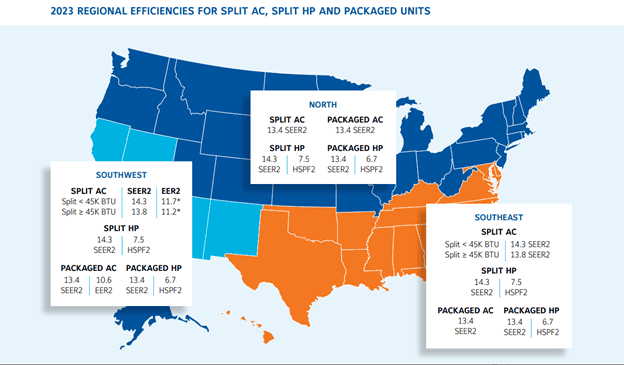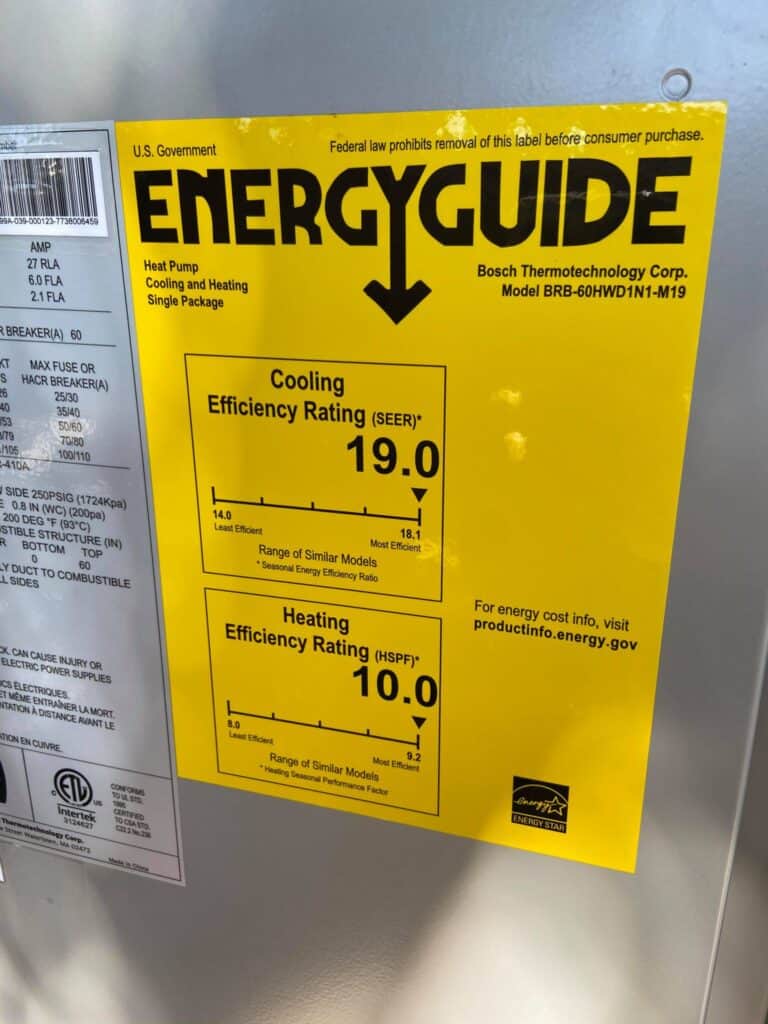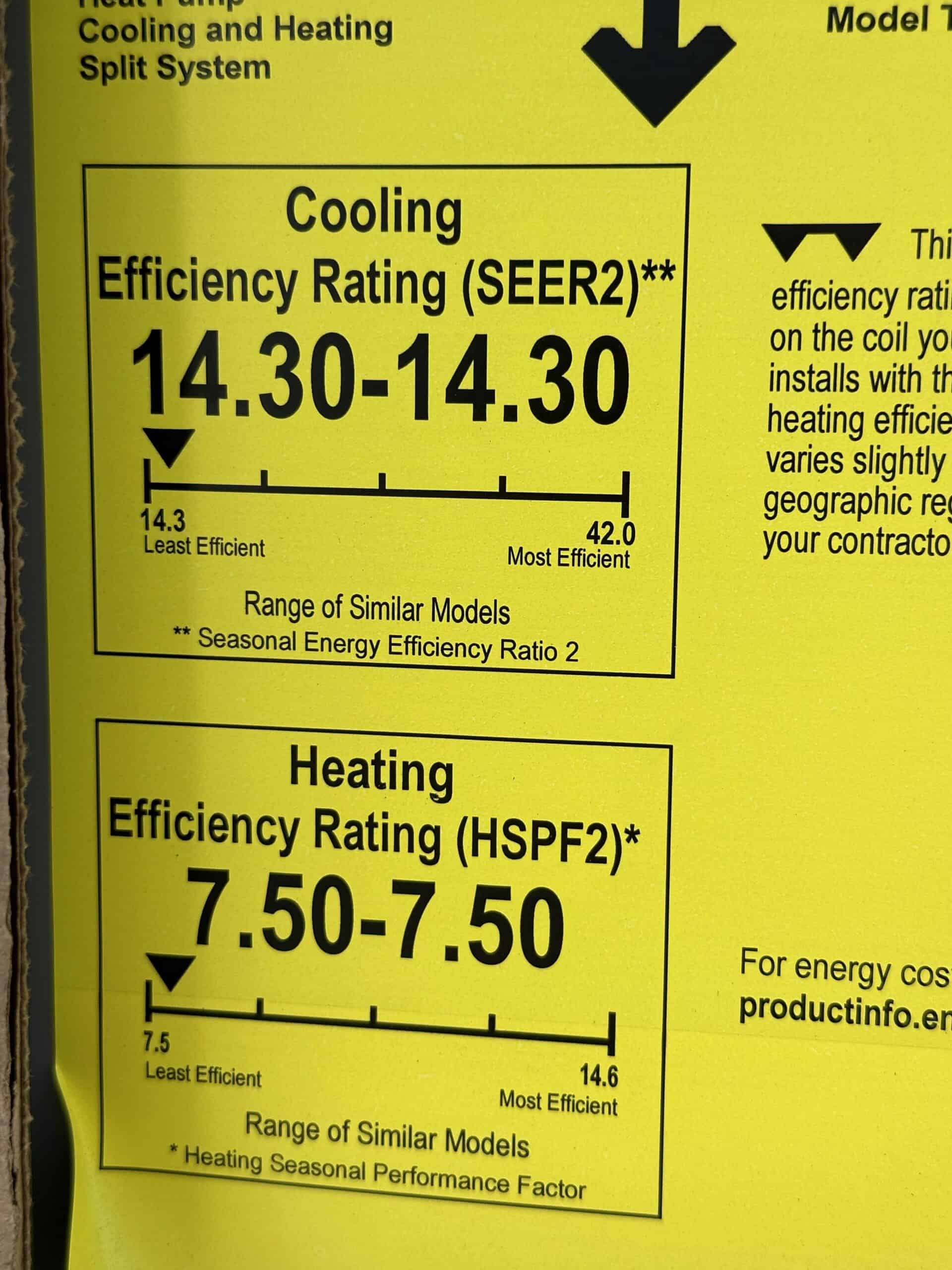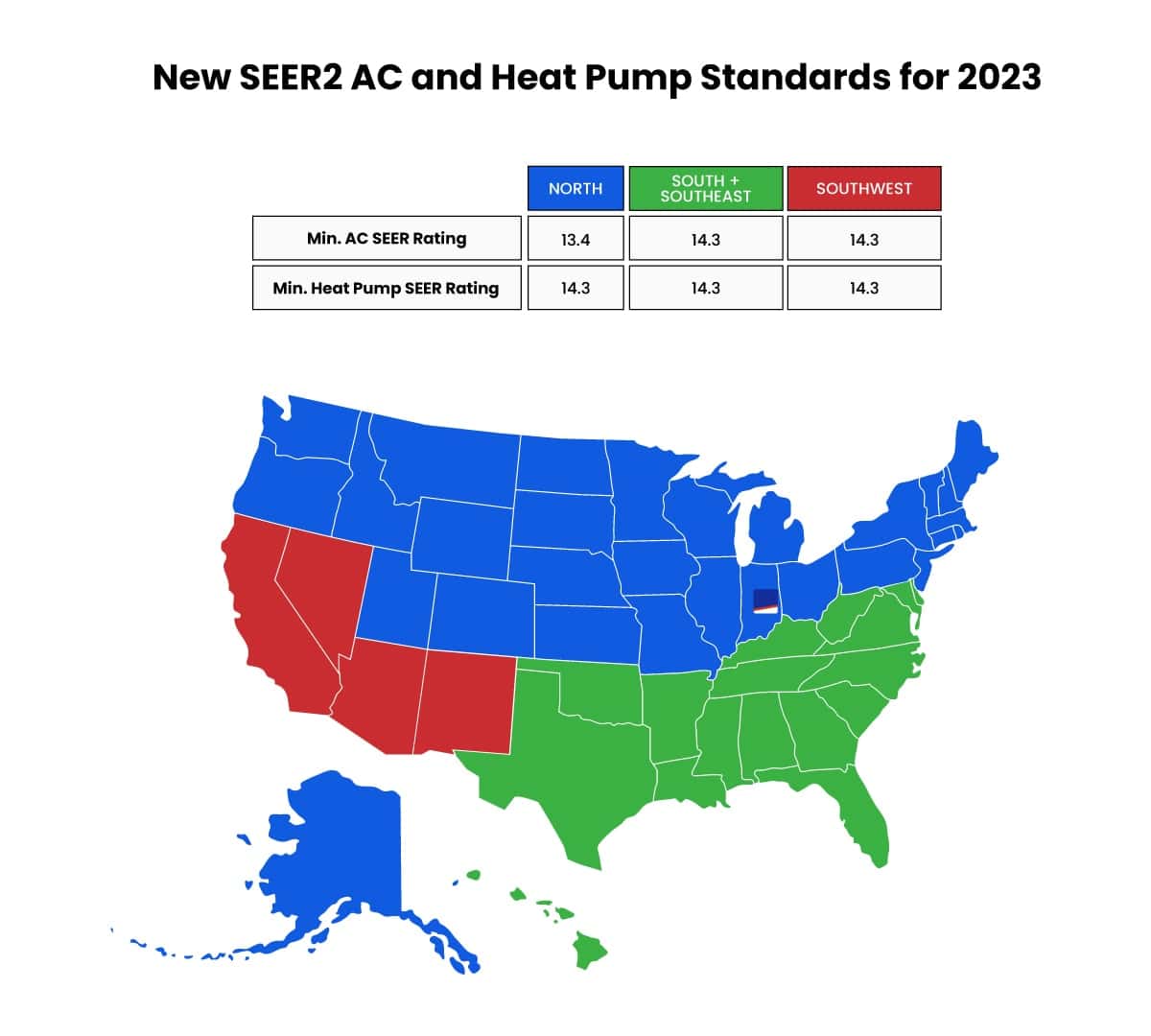- HeatingHeating Services
- Air ConditioningAir Conditioning Services
- Heat PumpHeat Pump Services
- ElectricalElectrical Services
- About
It can be difficult to wade through all the different brands and information when shopping for a new air conditioner. If you’re looking for tax rebates, savings, or high performance, there are even more factors to consider.
In this guide, we’ll walk you through all you need to know about SEER (and SEER2) ratings and how to find the best air conditioner for your home. This article will provide the essential information to make an informed choice that balances performance, cost, and efficiency.

SEER, or Seasonal Energy Efficiency Ratio, measures the efficiency of air conditioning systems. It calculates the cooling output an air conditioner provides over a typical cooling season and divides it by the total electric energy it uses during that period. The higher the SEER rating, the more efficient the air conditioner is.
SEER ratings usually start at around 14 for newer systems and can exceed 20 for modern, high-efficiency models. Older air conditioning units (early 2000s) usually have a seer rating of 10 or below.
Basically, benefits of a high SEER AC are less energy use and less environmental impact.

Considering an upgrade to your air conditioner? The table below outlines the energy savings you can expect when moving from lower to higher SEER ratings. It shows potential savings in ideal lab conditions and provides a range for what you might actually see, considering various real-world factors. Use this information to gauge how much you could cut down on your energy bills with a more efficient system.
The table below shows the estimated monthly running costs for air conditioners with different SEER ratings.
While SEER ratings offer a guideline on potential energy savings, actual savings will vary based on several factors. These include the installation quality of the air conditioning system, regular maintenance, and the overall energy efficiency of your home, such as insulation and window sealing.
Installation Quality: Proper installation of an AC unit is critical. An improperly installed unit may not operate at its optimal efficiency, regardless of its SEER rating. It’s crucial to hire qualified professionals who can ensure that the system is installed according to manufacturer specifications.
Maintenance: Regular maintenance, such as cleaning filters and checking refrigerant levels, also plays a significant role in the efficiency of an air conditioner. A well-maintained unit can perform close to its optimum efficiency, while a neglected one can consume more energy and still underperform.
Home Efficiency: The overall energy efficiency of your home affects how hard your AC system needs to work. Homes with poor insulation or air leaks will require more cooling, which can diminish the benefits of a high SEER rating.
So, just buying a higher SEER rated AC system might not mean much if everything else is not optimal.
As of January 2023, the Department of Energy has implemented a new rating system known as SEER2, which is currently in effect. SEER2 aims to provide a more accurate measure of an air conditioner’s efficiency under typical operating conditions. The SEER2 ratings are generally about 1-2 points lower than the current SEER ratings because the testing conditions are more stringent and better reflect realistic performance scenarios.
The minimum SEER rating for air conditioners used to be 13 SEER for Northern States and 14 SEER for Southern States. With the new SEER2 measurements, the minimum SEER2 rating for Northern States is 13.4 SEER2 and 14.3 SEER2 for Southern States.
For example, a unit that was rated at 14 SEER under the old system might be rated at 12 or 13 SEER2. This adjustment helps consumers make more informed decisions based on more realistic expectations of energy use and cost.

You might be wondering what the differences are between SEER and SEER2 ratings:
More Realistic Testing Conditions
SEER2 introduces tougher testing protocols that better simulate everyday environmental settings. This means that the new SEER2 ratings are a more accurate gauge of an air conditioner’s performance in typical residential conditions.
Lower Ratings, Same Efficiency
SEER2 ratings are typically 1-2 points lower than the previous SEER ratings but this doesn’t mean a reduction in efficiency. Instead, SEER2 provides a more realistic representation of an air conditioner’s energy consumption and efficiency.
Adjusting to New Labels
With the adoption of SEER2, all new air conditioners will carry these updated ratings. Consumers will need to recalibrate their expectations and understand that a SEER2 rating, while appearing lower, actually indicates a unit tested under stricter, more realistic conditions.

For Colorado Homeowners:
For Upgrading Beyond 16 SEER2:
For Highly Insulated Homes:
Understanding and navigating the complexities of SEER and SEER2 ratings is essential for anyone looking to invest in an air conditioning system that offers optimal efficiency and cost-effectiveness. The shift to SEER2 marks a significant advancement in ensuring that these ratings reflect real-world performance more accurately. This change not only aids consumers in making better-informed decisions but also supports the broader goal of reducing energy consumption and environmental impact.
As the industry continues to evolve with these new standards, staying informed will be crucial. Whether you are a homeowner planning to upgrade your air conditioning system or a business looking to make large-scale investments in HVAC technologies, understanding these changes can help you choose solutions that are both economically and environmentally sustainable.
Embrace these new efficiency standards, as they pave the way for advancements in air conditioning technology that promise to enhance both personal comfort and global sustainability.
A good SEER rating is typically 16 for most homes in Colorado, balancing up-front cost and efficiency. In warmer climates, 18 SEER and above may be a better fit.
It’s worth upgrading from 14 to 16 SEER if you are already replacing your AC system. The upgrade can offer around a 5-10% reduction in AC electricity use. If your current system is 14 SEER and functioning well, the benefits might not outweigh the cost of an early upgrade.
A 20+ SEER unit might be worth if you require the highest efficiency or always need the latest & greatest in technology. If you’re considering a ultra high efficiency central AC (20 SEER+), it might be best to get an inverter-driven heat pump instead to take advantage of rebates.
Generally, no. If you’re considering an 18 SEER, you’re likely looking at additional upgrades like a communicating furnace and thermostat. At that point, opting for a full inverter system with higher SEER might be more cost-effective. 18 SEER units fall in the mid to high-grade range of HVAC products and often provide relatively poor value.
SEER2 is the updated standard that more accurately reflects the real-world efficiency of air conditioners and heat pumps under typical operating conditions. It uses stricter testing criteria than the original SEER, resulting in slightly lower but more realistic ratings.
High SEER air conditioners use less energy to cool your home, which reduces greenhouse gas emissions and your household’s carbon footprint. This is especially important in regions dependent on fossil fuels for electricity.
